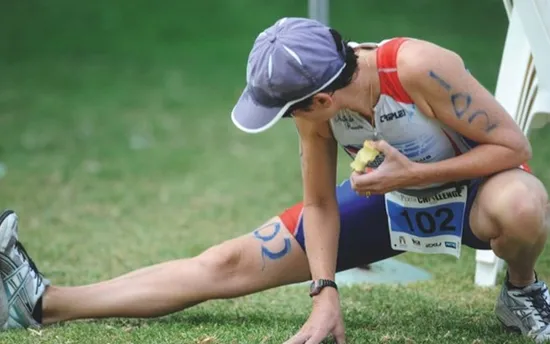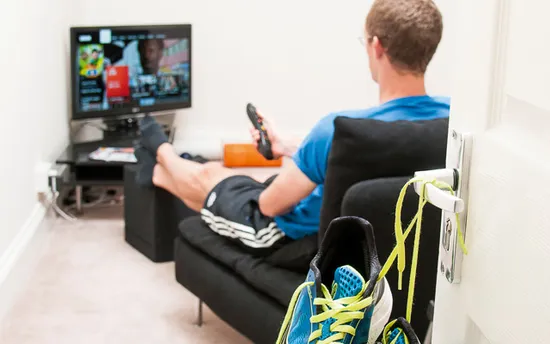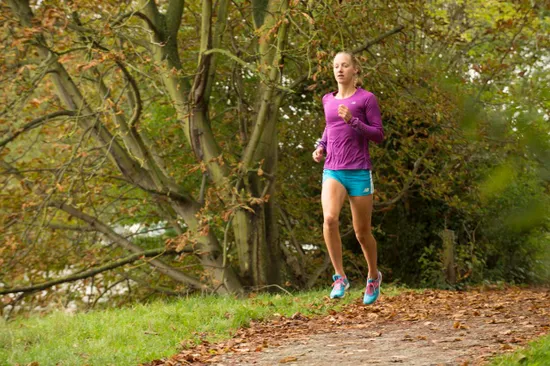Don’t soldier on if plantar fasciitis is plaguing your run, says British Triathlon’s head physio Emma Deakin. It’s painful and difficult to treat, but there are simple steps you can take to aid recovery…
As a physiotherapist, I dread athletes coming in with plantar fasciitis. It’s typically a reoccurring condition that’s difficult to treat (especially in elite athletes, who don’t like to take time off running!). But it’s a topic that needs talking about, as it’s increasingly common and was responsible for wiping out a large number of our female elite athletes at the end of the 2014 season.
Most importantly: the sooner you can offload and treat a plantar fasciitis, the more likely you are to get full resolution of symptoms and return to sport. Basically, if you think you have it, don’t leave it and don’t try to run through it.
What is plantar fasciitis?
Plantar fasciitis is the medical term for a thickening, changing structure of the plantar fascia. The plantar is a thick band of flexible but tough tissue that runs under the sole of the foot, connecting the heel bone to the smaller bone of the foot. It helps with shock absorption and stabilising the arch of the foot.

Signs and symptoms
The main symptom is pain around the heel that you can feel when standing, walking and running. This is often worse first thing in the morning.
The inflammation or injury can occur suddenly with an acute tear or rupture, or can happen over several months where small micro-tears develop in the structure, causing thickening and a decrease in its ability to absorb and transfer load.
Contributing factors:
■ Poor lower limb and foot biomechanics
■ Poor lower limb and foot strength and conditioning
■ A change or alteration in footwear, wearing ill-fitting or the wrong type of shoe
■ Changes in training, e.g. increased volume, increased speed work, running fatigued
■ Changes in running terrain
■ Tightness in the calf and Achilles complex
How can you treat it?
It’s crucial to have the condition properly diagnosed and treated. A therapist will assess your foot and your lower limb to look at which factors need alteration for you. Initially it will be important to offload the fascia and stop the aggravating activity. This means stopping running!
Often we put our elite athletes into an aircast boot to give the structure a chance to recover. There are lots of treatments available, stretch and strengthening programmes, as well as deep soft tissue and joint mobilisation work.
Orthotics and foot supports, looking at what trainers will best suit your foot type and a gradual/progressive return to your training programme will need to be discussed with your coach, making sure the foot is strong enough to cope with the volume and speed at which you need to run.

Treatments
These can include:
■ Offloaded training, aqua jogging, running on an AlterG or underwater treadmills
■ Deep tissue/deep frictions
■ Night splints/stretching
■ Graston Technique
■ Acupuncture and dry needling
■ Taping to offload pressure
■ Shoe inserts and orthotics
■ Medications (e.g. anti-inflammatories)
■ Shock wave therapy
■ Injection therapies
■ Surgery
Expert tips
After any injury like plantar fasciitis, it’s likely that you’ll have some time ‘offloaded’, which means avoiding any activity where you have to put weight on or push through the foot/lower limb.
That may seem easier said than done, but in general terms you’re safe to continue with activities that are pain-free.
In terms of triathlon’s specific disciplines, this unloading may mean:
Swim: Pull buoy and pull-only swimming, and pushing off the wall using only the uninjured side.
Bike: Stick to using your turbo or rollers in a low gear and staying in the saddle throughout.
Run: Try aqua jogging with a support belt. A cross-trainer maybe useful too, and there’s the option of an AlterG (an anti-gravity treadmill) or an underwater treadmill.
So offloaded or not, don’t fret – there is always some training to be done!

Foot intrinsic exercises
As well as a graduated stretching programme for the plantar fascia, foot intrinsic exercises are vital. These help to improve the strength, coordination, control and balance around the foot and ankle. Below are four to try.
It’s also worth adding in the usual calf strengthening exercises for the gastroc (straight leg calf raise) and soleus (bent leg calf raise) muscles. It’s important to stretch and strengthen the structure, but the most important thing to manage plantar fasciitis is early:
■ Diagnosis
■ Offloading
■ Intervention
(Images: Romilly Lockyer / Jonny Gawler)
